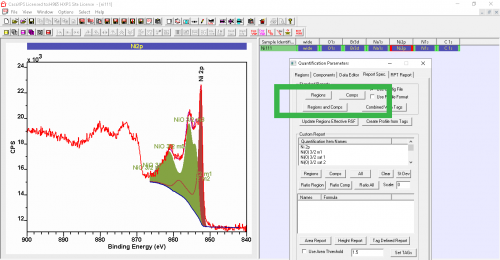

Fang, Role of carbon quantum dots on nickel titanate to promote water oxidation reaction under visible light illumination. Loye, Structural predictions in the ABO3 phase diagram.

Navrotsky, Energetics and crystal chemical systematics among ilmenite, lithium niobate, and perovskite structures. Chen, A review on visible light active perovskite-based photocatalysts. Smith, Soft X-ray spectroscopic studies of the electronic structure of M:BiVO 4 (M = Mo, W) single crystals. Schmuki, Influence of Ti 3+ defect-type on heterogeneous photocatalytic H 2 evolution activity of TiO 2. Proal-Nájera, Challenges of TiO 2 heterogeneous photocatalysis on cytostatic compounds degradation: state of the art. Velauthapillai, TiO 2 as a photocatalyst for water splitting-an experimental and theoretical review.

Khan, Enhancing the physical properties and photocatalytic activity of TiO 2 nanoparticles via cobalt doping. These characterization techniques help to understand its electronic and magnetic properties, which are important in photocatalytic devices.Ī. The magnetic hysteresis loop demonstrated that the NTO films may exhibit superparamagnetic behavior at 300 K. The RPES spectra indicate that the Ti 3 d (Ti 3+ defect states) and O 2 s are strongly hybridized. The films have been further characterized by x-ray photoemission spectroscopy and valence band spectroscopy, with a range of photonic energy resulting in the phenomenon of resonance photoemission spectroscopy (RPES) in accordance to find out the electronic spectra of NTO which eliminates the possibility of metal clusters in NTO films. It is hypothesized that the peaks of NTO's visible light absorbance result mostly from the charge transfer transitions d → d of Ni inside its valence band. Corresponding to photon energy of 2.7 eV, 2.5 eV and 1.5 eV, NTO shows clear absorbance peaks at 448 nm, 502 nm and 743 nm, respectively. NTO displays a band gap of 2.17 eV and exhibits direct band gap semiconductor characteristics. NTO preferentially absorbs ultraviolet radiation below 360 nm, visible light in the wavelength range from 420 nm to 540 nm and above 700 nm. Atomic force microscopy, which highlights the structure of the film surface, was used to assess the thin film microstructure and surface roughness.

NiO 6 and TiO 6 octahedra are arranged in alternating layers in the lattice structure of NTO. An ilmenite structure was maintained with better crystalline characteristics which were determined from structural examinations employing x-ray diffraction of thermally evaporated NiTiO 3 (NTO) thin films on Si (100) substrates.


 0 kommentar(er)
0 kommentar(er)
